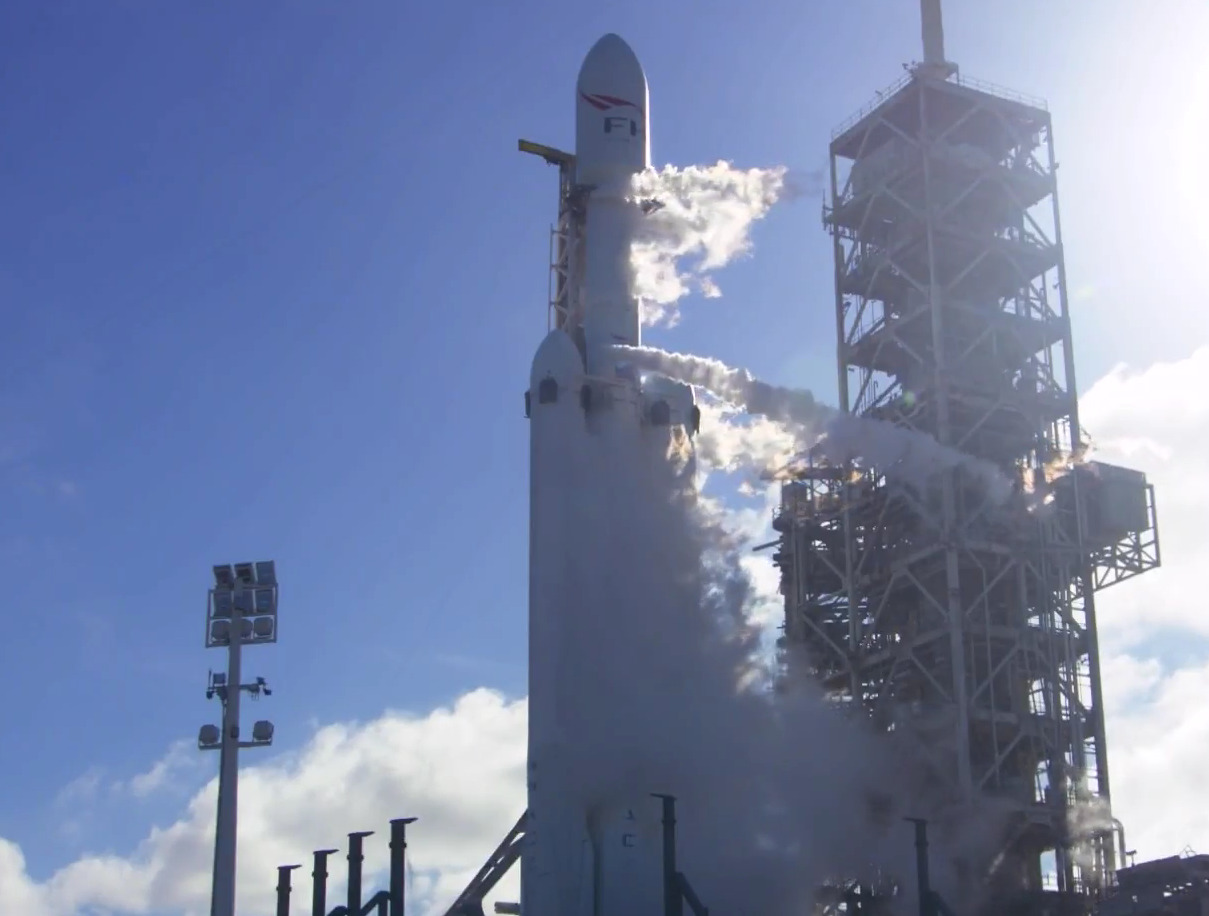SpaceX Reveals Why Falcon Heavy's Center Booster Crashed Into The Ocean
Last week's launch of SpaceX's Falcon Heavy was incredible for so many reasons, not least of which was Elon Musk's extremely low expectations for the craft's debut. Despite it being the very first test flight, things went almost perfectly for SpaceX, and Musk's own Tesla Roadster sailed for the heavens while two Falcon-9-based side boosters landed side by side for the world to see. Unfortunately, the center booster didn't survive its return journey, and now we finally know why.
The center booster, like its side booster brothers, was supposed to head back down and land on Earth. Rather than landing on shore, the center booster was supposed to touch down on a remote droneship hanging out off the coast. Instead of a gentle glide, it slammed into the ocean at around 300 mph, just over 300 feet from the floating platform. According to Musk, it just didn't have enough juice.
Replying to questions via Twitter, Musk revealed that the center booster ran out of ignition fluid and simply couldn't get all of its engines to fire before reaching the Earth. "Not enough ignition fluid to light the outer two engines after several three engine relights," Musk explains. "Fix is pretty obvious." As far as the two boosters that did touch down successfully, SpaceX revealed that they are not planning to reuse those in the future.
Not enough ignition fluid to light the outer two engines after several three engine relights. Fix is pretty obvious.
— Elon Musk (@elonmusk) February 12, 2018
Despite the loss of the center booster, the overall launch was an incredible success. SpaceX and its outspoken boss have never been shy about talking about their failures and noting what they learned along the way. The company released a video compilation of their disastrous early launch and recovery attempts last year, taking a moment to laugh at their own missteps. Musk famously stated that anything other than Falcon Heavy exploding on the launchpad would be a win in his book. Obviously things went much better than that, and he was clearly very pleased.
Ultimately, SpaceX hopes that the Falcon Heavy will one day ferry manned missions towards Mars and possibly beyond. For the time being, the company will continue work on its Falcon platforms in the hopes that they'll be ready to go by the time NASA and other space agencies are prepared to send crews deeper into space than ever before.
